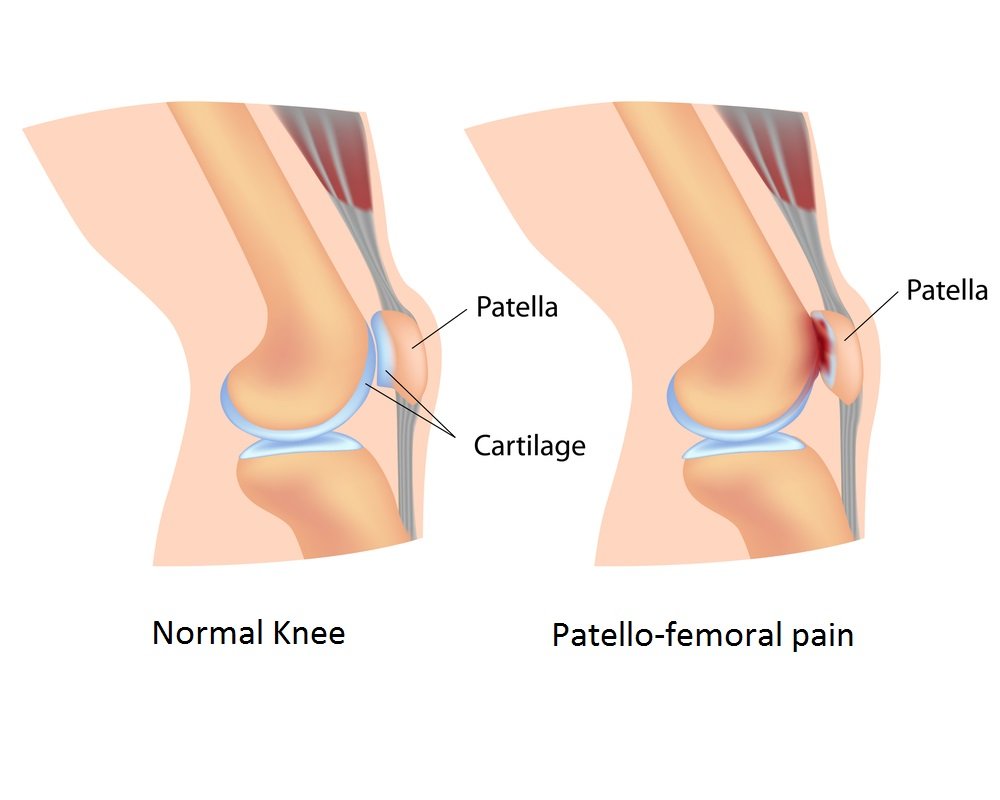Do you have patellofemoral pain syndrome?
Does your knee get sore while you are walking or running? Does it hurt when you go to stand up after sitting for extended periods of time or walking downstairs? Is it hard to pin-point where the pain is coming from? It is in the knee or behind the kneecap? You may have a condition known as patellofemoral pain syndrome.
Patellofemoral pain syndrome is one of the most common knee complaints of both the young active sportsperson and the elderly. It is the medical term for pain felt behind your kneecap, where your patella (kneecap) articulates with your thigh bone (femur). This joint is known as your patellofemoral joint.
Patellofemoral pain syndrome, is sometimes due to excessive patellofemoral joint pressure from poor kneecap alignment, which in time, affects the joint surface behind the knee cap.
Relevant findings can include:
- reduced quadriceps strength
- iliotibial band tightness
- inward rotation of the hip
- gluteal muscle weakness
- over pronated or flat feet
- laterally tracking patella
- tight hamstrings
- tight hip flexors
Advice for the first 4 weeks (or longer)
- limit deep squats and lunges into pain
- avoid sustained kneeling
- avoid going up or down stairs if painful
- do not walk or climb steps pigeon toed (feet turned inwards)
- do not knock your knees during walking, squatting
- avoid high impact sports unless cleared by therapist
A rough treatment plan
Please bear in mind this is a generic plan for treatment and your outcome will vary depending on personal circumstances such as how long you have been experiencing symptoms, compliance to treatment recommendations, advice/exercises prescribed and if you are able to attend follow-up appointments.
We have not included a time frame, as everyone is different, and respond differently to the same treatment plans.
Stage 1 early
- Soft tissue release aimed at reducing tightness in the area to assist with the patella alignment
- Get assessed and correct any misalignment of the hip/pelvis, leg and foot with or without orthotics
- Education about walking, stairs, squat and lunge alignment/ form
- Activity modifications to prevent aggravations
- Knee or foot strapping as needed
Stage 2
- Introduction of the best strength training exercises
- Rehab prescription for the correct prescription of exercise based on your individual assessment
- Start with priority areas first
- Continue those early therapy interventions as needed
Stage 3
- Progression of rehabilitation exercises focusing on correct alignment
- Work on core stability and introduce more dynamic control exercises in standing
Stage 4 return to full activity
- Work on high end dynamic strengthening exercises for full return to sports and work
How long will it take to get back to normal?
Most patients will start to see some reduced pain the first 2 weeks but this time can vary depending on the length / severity of your symptoms and if we were able to follow through the whole treatment plan.
Once the pain has reduced you may consider that you are back to normal and finish treatment. However, the pain has reduced only as the inflammation has subsided. The healing of the cartilage behind the patella is slow due to a poor blood supply in the area and can take up to 12 weeks for a structural repair of the cartilage.
Performing the correct retraining of the muscles to control your knee will see your injury rehabilitated to its potential. This gives the you the best chance of managing the injury in the long run. Misalignment of the patellofemoral joint if not completely rehabilitated can re-occur when you return to full activities.
Please keep in mind that this is a team effort to get you better, so work you’re your physio for a better outcome.






